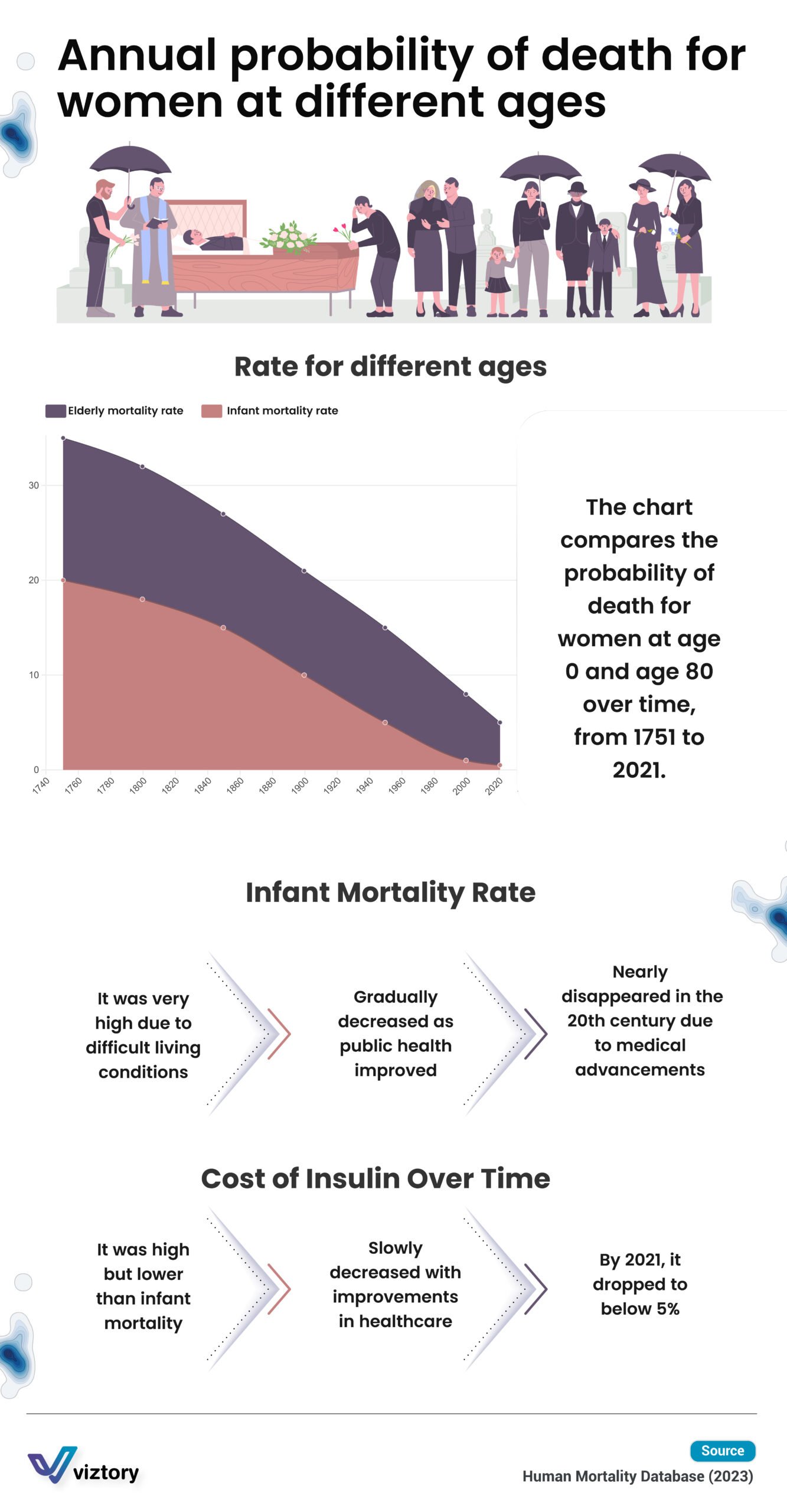Annual Probability of Death for Women at Different Ages
-
Sep, Thu, 2024
Annual Probability of Death for Women at Different Ages
The image provides a clear comparison of the probability of death for women at different ages over time, focusing particularly on early life (infancy) and old age (80 years). This comparison spans from 1751 to 2021, showing how mortality rates have been affected by living conditions and medical advancements.
Infant Mortality Rate
Initially, infant mortality rates were extremely high in the past due to difficult living conditions and the lack of developed healthcare. Newborns were vulnerable to diseases and malnutrition, leading to high mortality rates. Over time, the world saw a gradual improvement in public healthcare and disease prevention, significantly reducing infant mortality rates.
Elderly Mortality Rate
On the other hand, the graph also shows a gradual decline in elderly mortality rates. In past centuries, old age diseases and related health complications posed a significant threat to the lives of the elderly. With advancements in healthcare and the advent of modern medications, it became possible to control many chronic diseases and improve the quality of life for those in advanced stages of life.
Impact of Medical Advancements on Mortality Rates
The graph highlights that medical advancements, such as vaccines and modern treatments, played a key role in reducing mortality rates. This progress led to a substantial decrease in infant mortality, nearly eliminating infant deaths by the 20th century. Conversely, medical improvements have enhanced life expectancy for the elderly, reducing mortality rates in this age group as well.
Cost of Insulin Over Time
The image also points out that the cost of insulin, a crucial medication for diabetics, has decreased over time due to advancements in healthcare. While insulin was initially expensive, its cost has significantly decreased thanks to the development of the pharmaceutical industry and improved healthcare. By 2021, the cost of insulin had dropped to below 5%.
Conclusion
The image clearly demonstrates how improvements in healthcare over the centuries have significantly impacted mortality rates, both for infants and the elderly. With the advancement of medicine and healthcare, it has become possible to reduce death rates and improve the overall quality of life, emphasizing the vital role of medical progress in shaping a healthier future for future generations.

